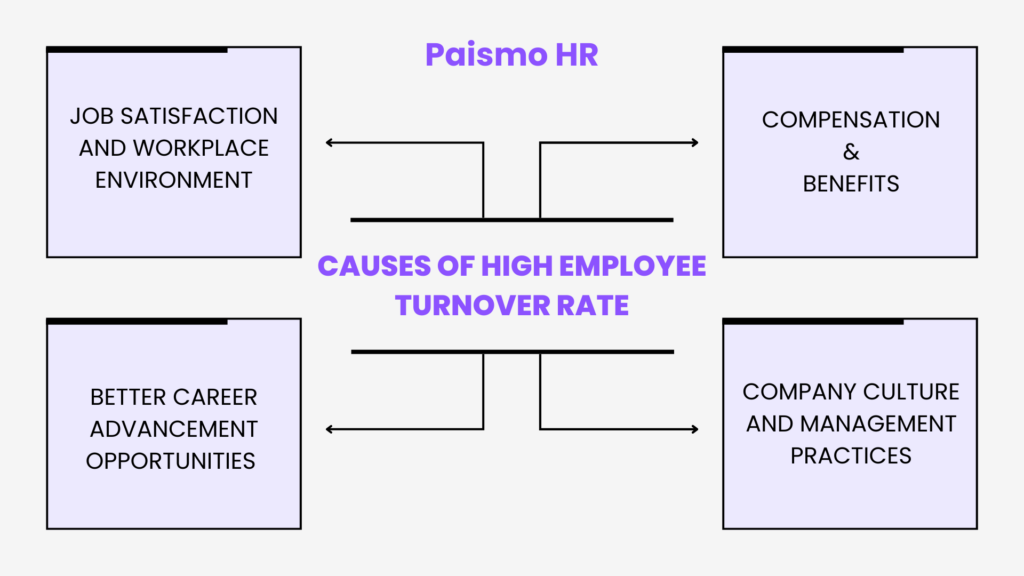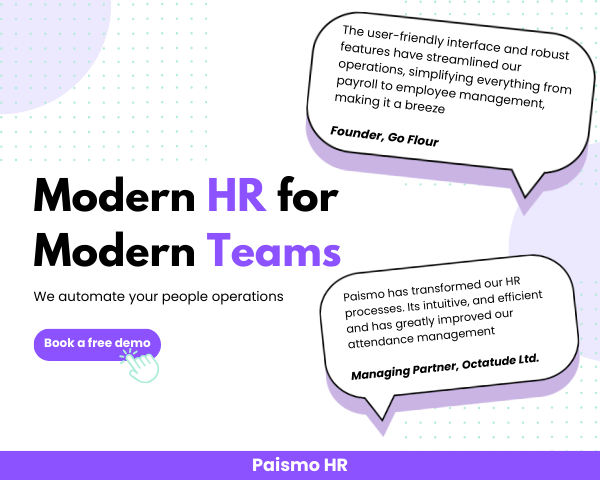Understanding employee turnover rates is essential for organizational success in today's dynamic business landscape. Employee turnover rate refers to the frequency at which employees leave a company and need to be replaced, and it can significantly impact the overall health of an organization and other employee performances. High turnover rates can lead to increased costs, disrupted workflows, and decreased morale among remaining staff. Conversely, a low turnover rate generally indicates a stable and satisfied workforce, which can enhance productivity and foster a positive corporate culture.
Measuring turnover provides valuable insights into employee satisfaction, engagement, and retention strategies. Companies can identify underlying issues by effectively monitoring and analyzing turnover rates, developing targeted interventions, and creating a workplace that encourages long-term commitment and positive attendance.
In this blog, we will delve into the fundamentals of employee turnover rates, explore the causes and consequences of high turnover, and discuss practical strategies to enhance employee retention. Whether you are an HR professional, a business leader, or simply interested in workplace dynamics, this guide offers essential information to help navigate employee turnover's complexities.
Understanding Employee Turnover Rate
The employee turnover rate is a vital metric for organizations that maintain a stable and productive workforce. This rate reflects the percentage of employees who leave the company within a specific timeframe, typically calculated annually. By closely monitoring the employee turnover rate, businesses can gain insights into their internal environment, identify areas for improvement, and implement strategies to enhance retention.
For example, if a company had 200 employees and 30 left over the year, the employee turnover rate would be 15%. A high employee turnover rate may signal low job satisfaction, inadequate compensation, or poor company culture. In contrast, a low turnover rate generally indicates a more engaged and stable workforce.
Causes of High Employee Turnover Rate
Understanding the causes of employee turnover is essential for organizations seeking to reduce attrition and enhance retention. A high employee turnover rate is also tedious for your HR team and its processes. Various factors contribute to employees' decisions to leave, and recognizing these can help companies implement practical strategies. Here are some of the primary causes of employee turnover.
Job Satisfaction and Workplace Environment
A lack of job satisfaction is a leading cause of employee turnover. Employees who feel undervalued, overworked, or unappreciated are more likely to seek opportunities elsewhere. Additionally, a hostile workplace environment characterized by poor relationships with colleagues or management can drive employees away.
Better Career Advancement Opportunities
Employees often leave organizations that do not offer evident career growth and development pathways. If individuals feel stagnant in their positions or see no opportunities for advancement, they may pursue other roles that promise better career prospects and professional development.
Compensation and Benefits
Financial considerations significantly influence employee turnover. Employees who feel they are not fairly compensated for their skills and contributions will likely seek better-paying opportunities. Inadequate benefits, such as health insurance, retirement plans, and paid leave, can also lead to dissatisfaction.
Company Culture, Management Practices, and Personal Reasons
The organizational culture and management style play crucial roles in employee satisfaction. A toxic work culture, lack of transparency, or ineffective management can increase turnover. Employees desire a supportive and inclusive culture and approachable and competent leaders who value their input.
Employees leave due to circumstances beyond the organization’s control. These factors include family obligations, relocation, health issues, or seeking a better work-life balance. While these reasons may not directly reflect the workplace environment, they contribute to overall turnover. By understanding these causes of employee turnover, organizations can implement targeted strategies to address and mitigate these issues, ultimately fostering a more satisfied and committed workforce.

Impact of High Employee Turnover Rate
High employee turnover rates can have significant and far-reaching effects on an organization, influencing everything from financial performance to team dynamics. Understanding these impacts is essential for businesses to retain talent and maintain a productive work environment.
Financial Burden on the Company
One of the most immediate consequences of a high employee turnover rate is the financial burden it places on a company. Recruitment, hiring, and training costs can quickly add up when organizations must frequently replace employees. The cost of onboarding new hires and the lost productivity of both new and departing employees can severely affect the bottom line.
Disruption of Team Dynamics
A high employee turnover rate can disrupt established team dynamics and lead to a breakdown in collaboration. When team members leave, remaining employees may experience increased workloads and stress, which can further contribute to dissatisfaction and lead to even more attrition. This cycle creates instability within teams, hindering overall performance.
Decreased Employee Morale
Frequent turnover can have a detrimental impact on employee morale. When staff members witness constant departures, they may become demotivated, feeling uncertain about their own job security or the company’s direction. This decline in morale can further exacerbate the employee turnover rate, as remaining employees may feel compelled to seek more stable environments.
Tarnished Organization Reputation
A persistently high employee turnover rate can tarnish an organization's reputation, making it difficult to attract top talent. Potential candidates often research employee satisfaction and retention rates before accepting job offers. Companies known for high turnover may struggle to convince candidates of their value, leading to a less qualified applicant pool. In conclusion, understanding the impact of high employee turnover rates is crucial for organizations aiming to foster a stable workforce. By addressing the factors contributing to turnover, companies can mitigate these adverse effects, enhance employee satisfaction, and ultimately create a more resilient organization.
Steps to Reduce or Counter High Employee Turnover Rate
Reducing a high employee turnover rate is essential for fostering a stable and productive work environment. Organizations can take several proactive steps to address the root causes of turnover and promote employee retention. Here are some effective strategies to consider.
Enhance Employee Engagement
One of the most effective ways to lower the employee turnover rate is to boost employee engagement. Regular feedback sessions, employee recognition programs, and team-building events can strengthen relationships and create a sense of belonging. Engaged employees are more likely to feel valued and committed to the organization, reducing their likelihood of seeking other opportunities.
Provide Competitive Compensation and Benefits
Offering competitive salaries and benefits is crucial in retaining talent. Companies should regularly review their compensation packages to align with industry standards. Additionally, providing attractive benefits such as health insurance, retirement plans, and flexible working arrangements can significantly impact employee satisfaction and help lower the employee turnover rate.
Foster Career Development Opportunities
Employees are likelier to stay with an organization that invests in their professional growth. Providing training programs, mentorship opportunities, and paths for advancement can enhance employee morale and commitment. When employees see a clear trajectory for growth, they are less inclined to leave, resulting in a reduced employee turnover rate.
Create a Positive Work Environment
Cultivating a healthy company culture is fundamental to employee retention. Organizations should promote open communication, inclusivity, and respect among employees. Implementing policies that support work-life balance and employee well-being can create a positive atmosphere that encourages employees to stay.
Conduct Exit Interviews
Understanding why employees leave is vital for implementing effective retention strategies. Conducting exit interviews provides valuable insights into potential issues within the organization. Analyzing feedback from departing employees can help identify patterns and guide improvements that ultimately help reduce the employee turnover rate. By implementing these steps, organizations can effectively combat high employee turnover rates and create an environment where employees feel valued, motivated, and committed to the company’s success.
Become a part of the Paismo community
Paismo can help simplify your HR processes. In today's dynamic economic environment, efficient HR and automated payroll management are no longer a luxury but a necessity. Paismo is a comprehensive solution that transforms traditional HR complexes into streamlined and automated workflows. Paismo and its paired biometric devices can be used for your business to mark employee attendance and record their timesheets accurately.
Paismo simplifies your tasks with its core HRMS, timesheets, and attendance management, as well as biometric attendance, payroll automation, and leave management system.
Take the first step toward modernizing your HR and payroll processes and explore what Paismo can do for you. Book a demo with our exceptional sales team here.









